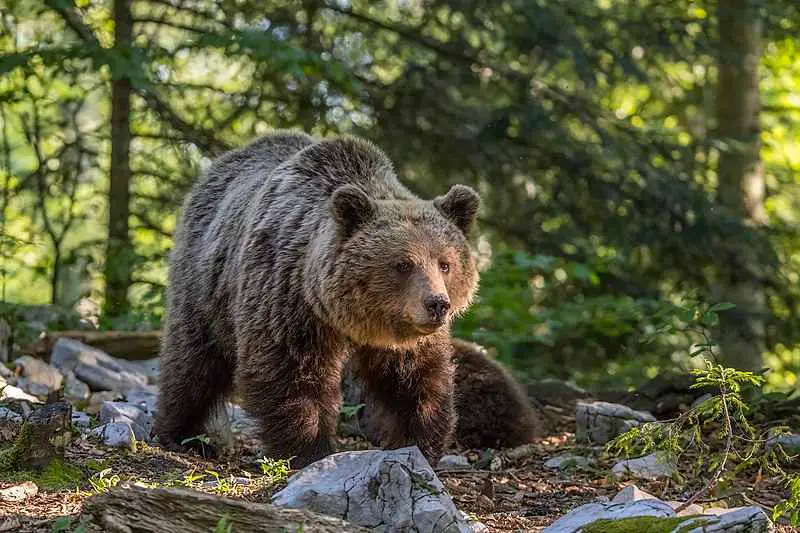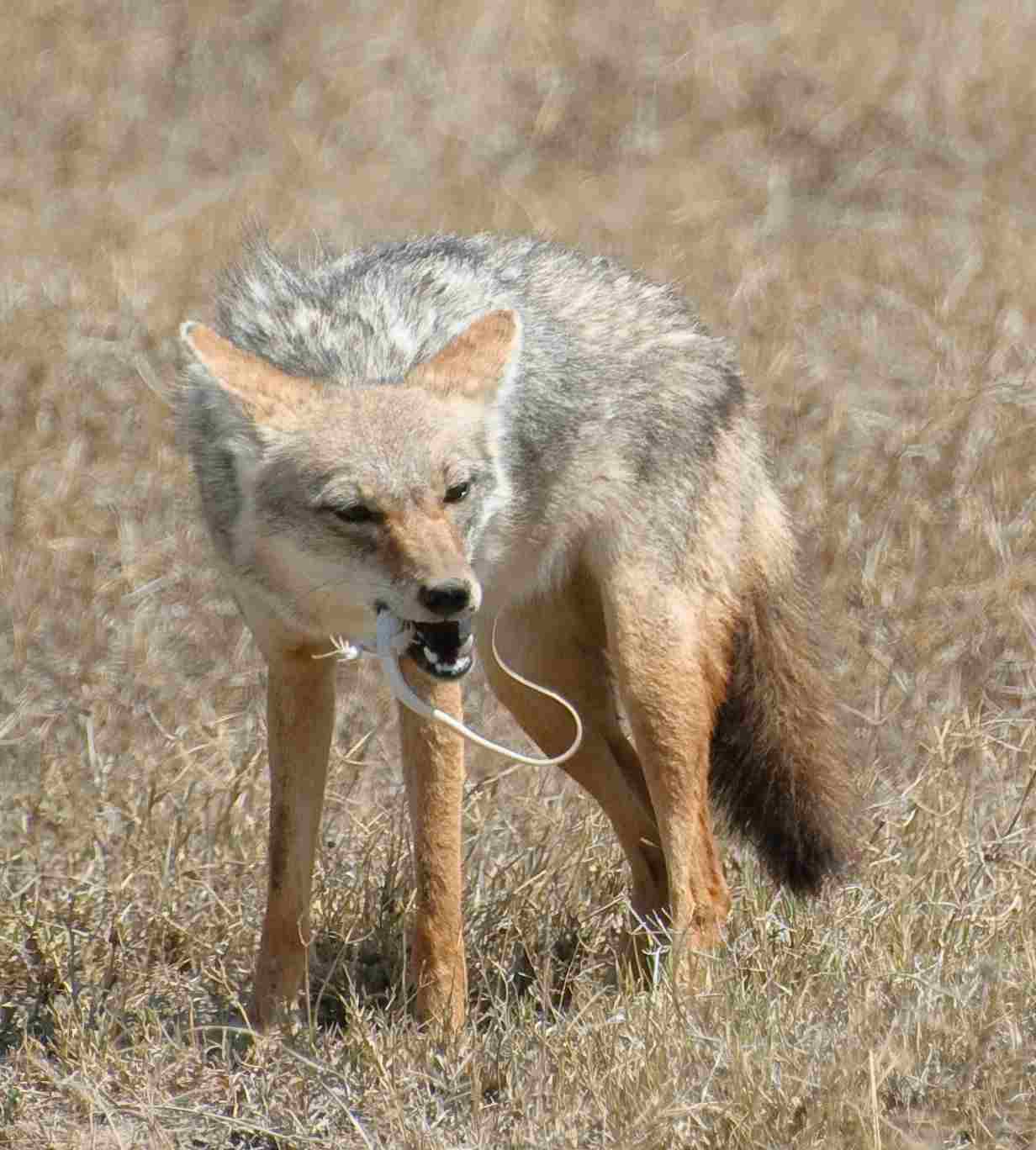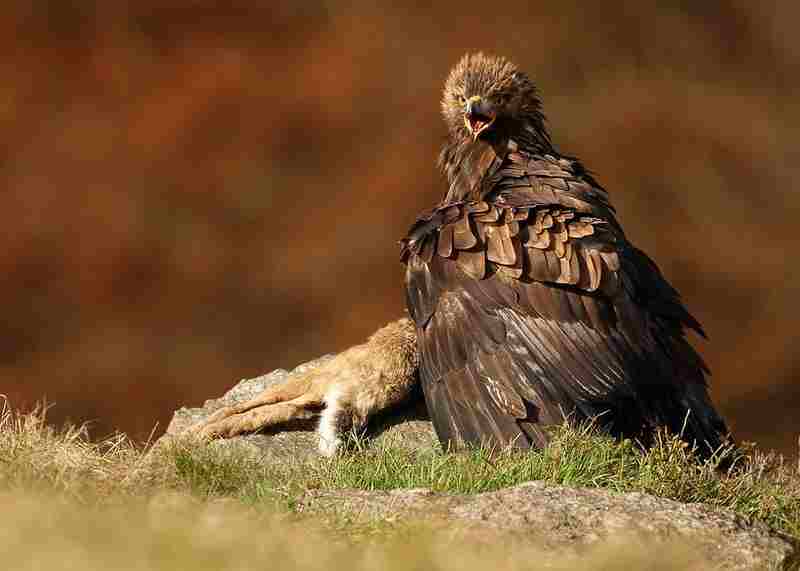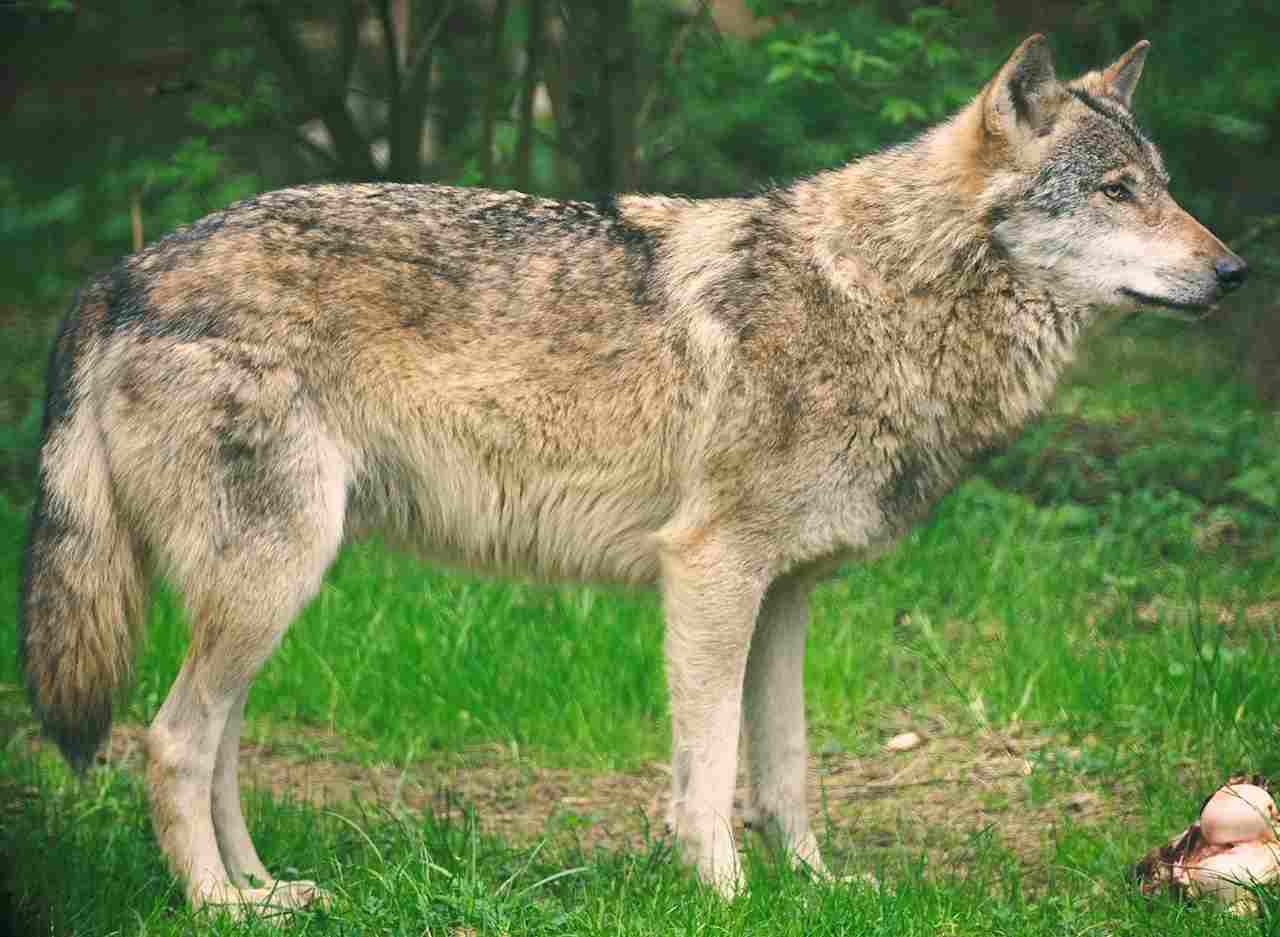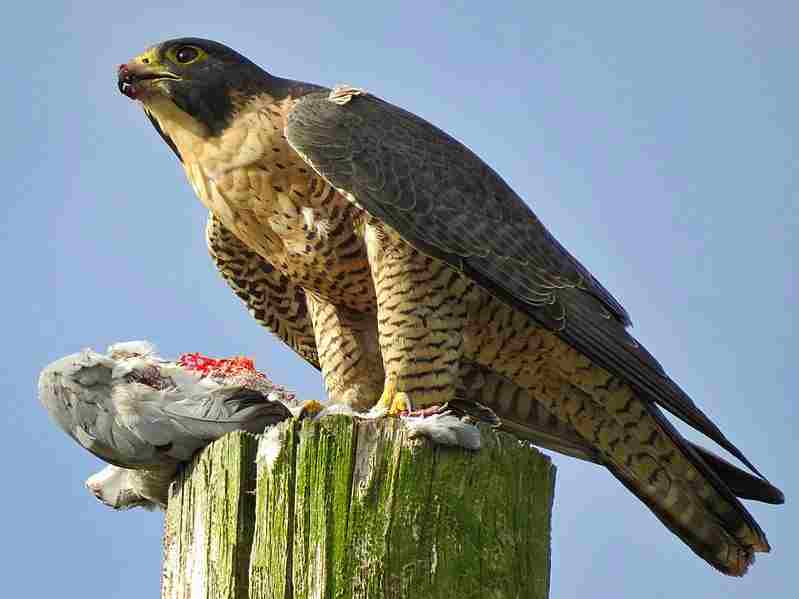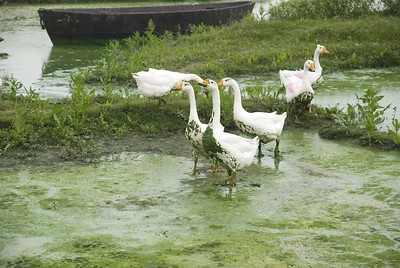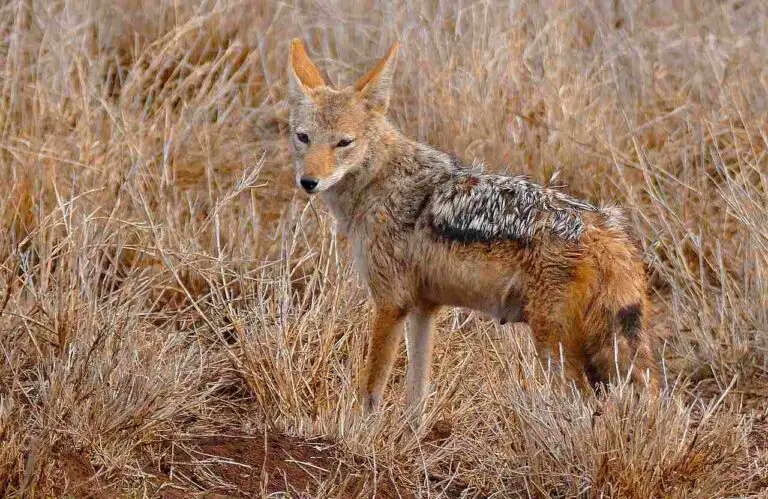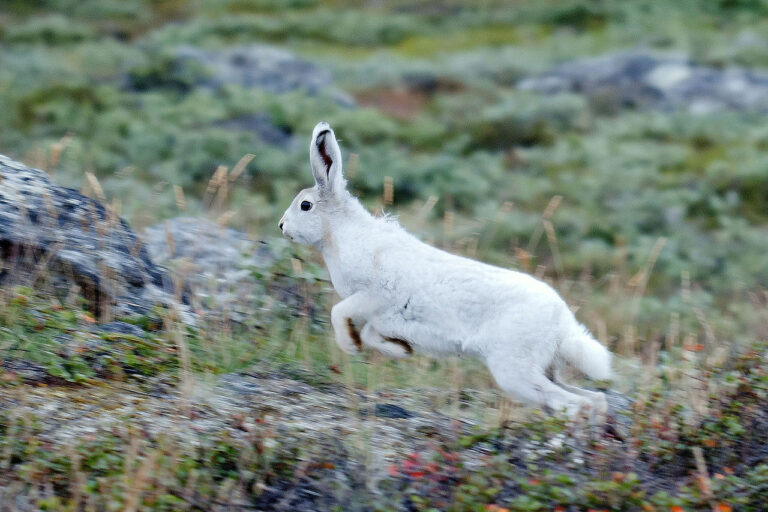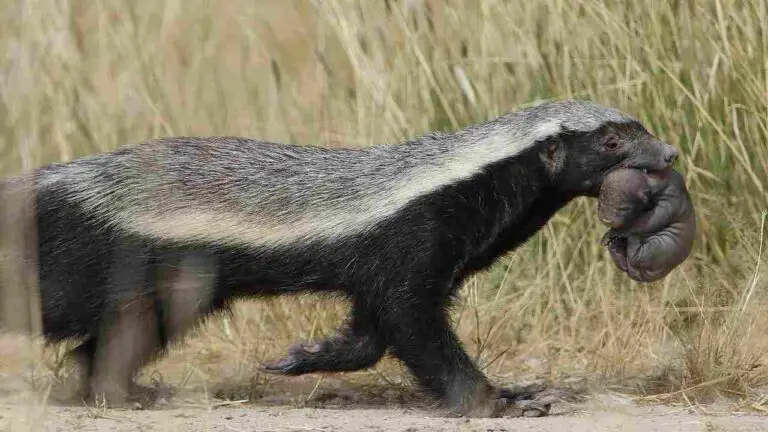Temperate Forest Food Chain (5) Trophic Levels Discussed
Temperate forest food chain comprises of producers like trees and shrubs; primary consumers like herbivorous rodents; secondary consumers like small canids; tertiary consumers like the gray wolf; and quaternary consumers like bear.
Decomposers in the temperate forest like bacteria and fungi do not occupy any particular trophic level of the food chain and may be excluded as a definite component of the ecosystem in terms of trophic zonation
This article discusses the temperate forest food chain based on its trophic levels and their biotic occupants, as follows;
1). Producers in the Temperate Forest (as part of the Temperate Forest Food Chain)
Primary producers in the temperate forest are autotrophic organisms that can manufacture their own food using visible light from solar radiation, along with inorganic materials like water and carbon dioxide.
The producers in temperate forests are mainly plants; which could be vascular or non-vascular. Other autotrophs like cyanobacteria and algae also occur, but they are far-less represented in temperate forests than in aquatic ecosystems like lakes and ponds, or marine biomes.
Through their photosynthetic activities, primary producers serve as the ultimate biological resource in temperate forests; in terms of both biomass and bioenergy.
Producers also serve as a bridge between biotic and abiotic factors in temperate forests, by depending on abiotic physicochemical conditions like temperature, pH, light availability, humidity and nutrients, for their growth and survival [3].
Examples of producers in the temperate forest are; shrubs, trees, herbaceous plants, mosses and lichens.
Shrubs in the temperate forest, are relatively-low lying, woody plants that are between herbaceous plants and trees in size and height.
These producers are part of the understory segment of the forest structure or canopy, below the trees. Some shrubs that grow in temperate forests are; azalea, rhododendron, and mountain laurel.
Roles played by shrubs in the temperate forest include that of food/energy resource, climate modifier, shelter/micro-habitat, and facilitator of carbon sequestration.
Trees are also efficient as carbon sinks, in temperate forests. These plants are most dominant among producers in terms of size, diversity, areal coverage, and ecological influence.
The types of trees found in temperate forests are; coniferous and deciduous trees. Coniferous trees are know for their needle-shaped leaves and evergreen growth, while deciduous trees tend to shed their leaves on a seasonal basis [2].

Some (coniferous and deciduous) trees in temperate forests are; cedars, pines, spruces (coniferous); maples, birches and oaks (deciduous).
Temperate forest trees are important as micro-habitats, contributors to the carbon and oxygen cycles; and potential tools for mitigating climate change.
Herbaceous plants in the temperate forest include angiosperms that are non-woody and low-lying, falling behind trees and shrubs in height and mass.
Due to their height, herbaceous plants are a major part of the lower understory segment of the forest canopy, as well as part of the dense vegetative growth on the forest floor.
Examples of temperate forest herbaceous plants are; ferns and grasses. These plants may grow seasonally, and vary in their adaptive physiological attributes.
Lichens and Mosses in temperate forests are the main representatives of non-vascular plants. They are most productive in areas with high relative-humidity, and may serve as food source as well as micro-habitat to some organisms.
2). Primary Consumers in the Temperate Forest
Primary consumers in the temperate forest are heterotrophic organisms that survive by feeding on producers.
These organisms may be described as herbivorous or frugivorous, and occupy the second trophic level of the food chain. They are obviously important in this position, because they form a link between producers (the main source of bioenergy) and non-herbivorous consumers who are unable to feed directly on the producers.
Primary consumers in temperate forests include mammals like rodents and large ruminants, as well as some birds and insects.
As mammalian primary consumers, rodents in temperate forests constitute a diverse and adaptive group of organisms.
Temperate forest rodents differ in their behavioral tendencies as well as in minute details of their physiology. They are ecologically resilient and productive, so that the population size of rodents as a group is one of the largest among mammals in temperate forests.
Herbivorous rodents feed on stems, leaves, nuts, seeds and fruits. Through their activities they contribute to the dispersal of seeds and geographic-spread of plants in their environment.
Examples of rodents which are primary consumers in temperate forests include hares, rabbits, squirrels, voles, and various species of mice.
Some of these animals may exhibit omnivorous behavior occasionally, by feeding on insects among other non-plant food sources.
Large ruminants in temperate forests include various types of deer like the mule deer, that consume plant twigs, leaves, grasses and fruits.
Birds that are primary consumers in temperate forests include herbivores like the sparrow, thrush, cuckoo and finch, which feed on seeds, berries, and fruits, among other plant materials [4].
The effects of their activities are similar to those of insects like grasshoppers, beetles and caterpillars, that influence the distribution and adaptation of plants in their territory through population modification, seed dispersal, and pollination.

3). Secondary Consumers in the Temperate Forest (as part of the Temperate Forest Food Chain)
Secondary consumers in temperate forests can be found in the third trophic level of the food chain and energy pyramid.
They comprise of heterotrophic organisms that feed mainly on primary consumers to obtain energy and nutrients.
Most secondary consumers are exclusively carnivorous in their feeding habits, although some may be omnivorous.
They are also predatory in most cases, and rely of adaptive features and behaviors to capture prey.
Activities of the secondary consumers influence the species richness and biodiversity of both primary consumers and producers. They also facilitate energy transfer from the primary consumers to tertiary and quaternary consumers.
Examples of secondary consumers in the temperate forest are; red fox (Vulpes vulpes), cougar (Puma concolor couguar), and bobcat (Lynx rufus).
The red fox is a relatively-small sized predator that is fairly widespread in temperate regions. Its prey include birds, amphibians, reptiles and small mammals. It may also feed on fruits and insects [1], and is highly adaptive and opportunistic.
Cougars are also referred to as mountain lions or pumas. They are highly skilled predators and may also play the roles of tertiary and quaternary consumer, depending on the animals present in their environs.
Bobcats are smaller than cougars, but similar in solitary behavior, keen sensitivity, and predatory skill. Their food sources include squirrels, birds and rabbits.
4). Tertiary Consumers in the Temperate Forest
Tertiary consumers in temperate forests often function as the most dominant predators in their territory, and become second-place only when quaternary consumers are present.
They occupy trophic level four (4) of the temperate forest food chain, and have the advantage of consuming organisms from multiple levels beneath them in the ecosystem.
Examples of tertiary consumers in temperate forests are; gray wolf, goshawk, and cougar.
Their feeding activities help regulate the population sizes of other consumers in temperate forests.
5). Quaternary Consumers in the Temperate Forest (as part of the Temperate Forest Food Chain)
Quaternary consumers may also be called apex predators, and occupy a position of utmost dominance in the temperate forest.
Not all food chains include a fifth trophic level for quaternary consumers. The presence of a fifth trophic level is only possible in robust ecosystems with diverse consumers which can be categorized into multiple, sizeable groups.
In some classifications, humans (Homo sapiens) may be placed among quaternary consumers, since they are able to hunt and prey-on even the most advantaged carnivores.
Organisms that may be classified as quaternary consumers or apex predators in temperate forests are; bears, raptors, and large felines.

Conclusion
Temperate forest food chain comprises of the following trophic levels;
1. Producers
2. Primary Consumers
3. Secondary Consumers
4. Tertiary Consumers
5. Quaternary Consumers
References
1). Calisti, M.; Ciampalini, B.; Lovari, S.; Lucherini, M. (1990). "Food habits and trophic niche variation of the Red Fox Vulpes vulpes (L., 1758) in a Mediterranean coastal area." Revue d'Ecologie 45(2). Available at: https://doi.org/10.3406/revec.1990.2008. (Accessed 29 May 2023).
2). Givnish, T. J. (2002). "Adaptive Signifi cance of Evergreen vs. Deciduous Leaves: Solving the Triple Paradox." Silva Fennica 36(3). Available at: https://doi.org/10.14214/sf.535. (Accessed 29 May 2023).
3). Helm, N.; Essl, F.; Mirtl, M.; Dirnböck, T. (2017). "Multiple environmental changes drive forest floor vegetation in a temperate mountain forest." Ecol Evol. 2017 Mar 1;7(7):2155-2168. Available at: https://doi.org/10.1002/ece3.2801. (Accessed 29 May 2023).
4). O'Donnell, C. F. J.; Dilks, P. J. (1994). "Foods and foraging of forest birds in temperate rainforest, South Westland, New Zealand." New Zealand Journal of Ecology 18(2):87-107. Available at: https://www.researchgate.net/publication/264430843_Foods_and_foraging_of_forest_birds_in_temperate_rainforest_South_Westland_New_Zealand. (Accessed 29 May 2023).
